Aug 12, 2025
Full Face Motorcycle Helmet: Ultimate Guide to Safety & Style
Introduction to Full Face Motorcycle Helmets
The full face motorcycle helmet is the most comprehensive protective gear for riders, designed to shield the head, face, and jaw during accidents. Unlike open-face or 3/4 helmets, it encloses the entire head, reducing injury risks to vulnerable facial areas in collisions. This design is critical for absorbing impacts, deflecting debris, and minimizing trauma to the skull and jawbones.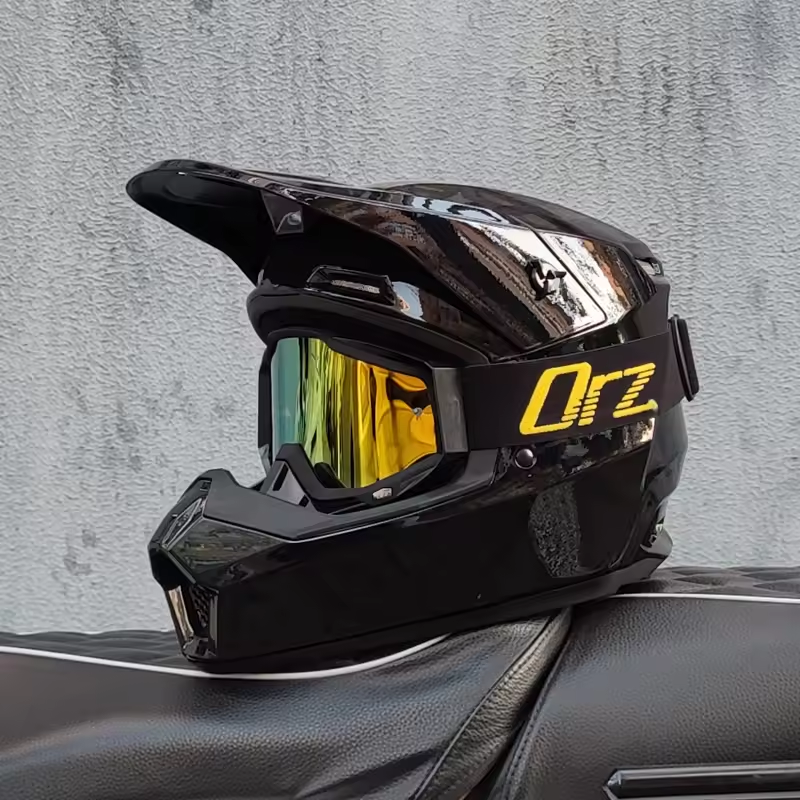
Developed with advanced materials like polycarbonate shells and energy-absorbing EPS foam liners, modern full face helmets balance safety and comfort. They often feature adjustable ventilation systems to combat heat buildup during long rides, while anti-fog visors and noise-reducing interiors enhance clarity and focus.
Certifications such as DOT, SNELL, or ECE ensure compliance with safety standards, making these helmets mandatory for serious riders. Beyond protection, they now offer customizable fits, sleek aesthetics, and modular designs for diverse riding styles—from highway commuting to off-road adventures.
Choosing the right full face motorcycle helmet involves selecting the correct size, verifying certifications, and matching features to your riding environment. It remains the cornerstone of rider safety, combining innovation with reliability to safeguard every journey.
Key Safety Features of a Full Face Helmet
A full face motorcycle helmet is engineered with advanced features to protect riders in high-impact scenarios, making it indispensable for safety-conscious motorcyclists. Below are its critical safety components:
1. Impact-Resistant Shell
The outer shell, typically made of polycarbonate or carbon fiber-reinforced composites, absorbs and disperses energy during collisions. These materials are lightweight yet rigid, preventing penetration from debris while reducing rotational forces that cause brain injuries. Modern designs often include reinforced chin bars to enhance protection for the lower face and jaw.
2. Energy-Absorbing Liner
The inner layer consists of expanded polystyrene (EPS) foam, which crushes upon impact to dissipate force away from the skull. Thicker foam in key areas provides targeted protection. Some helmets integrate multi-density EPS to adapt to varying collision speeds, further minimizing trauma.
3. Secure Chin Strap System
A well-designed chin strap ensures the helmet stays firmly in place during sudden movements or falls. Adjustable buckles with quick-release mechanisms balance security and convenience. The strap’s padding and ergonomic fit prevent slippage, while reinforced stitching withstands high stress.
4. Protective Visor and Ventilation
The polycarbonate visor shields eyes from debris and UV rays, with anti-fog coatings and scratch-resistant coatings improving visibility. While ventilation holes enhance airflow to prevent overheating, their placement is strategically optimized to avoid compromising structural integrity. Some models include Pinlock inserts to eliminate fogging without sacrificing safety.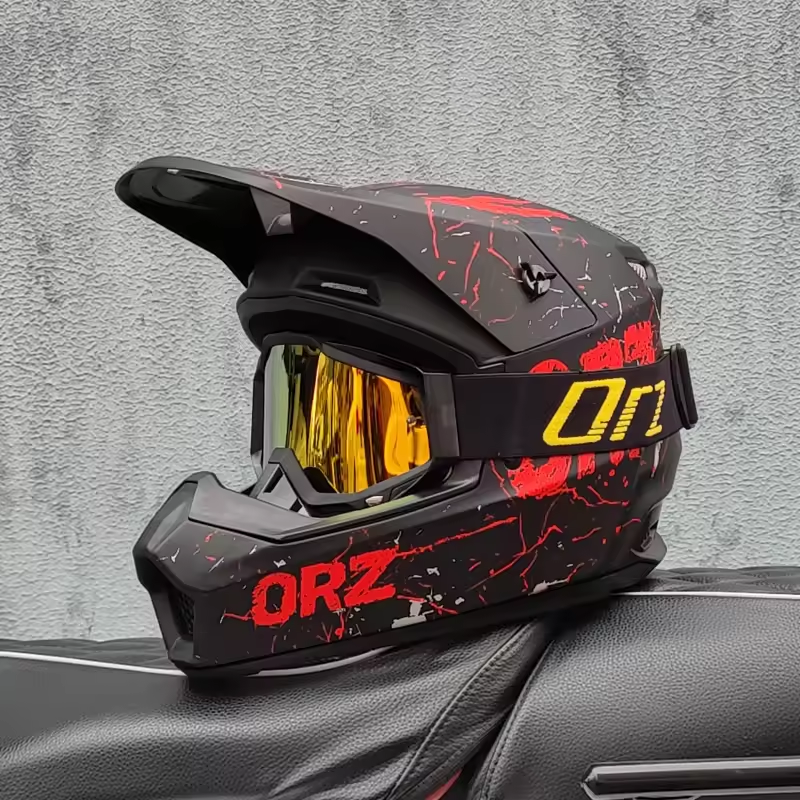
5. Certification Compliance
Reputable full face helmets meet standards like DOT (U.S.), SNELL (voluntary racing-grade), or ECE 22.05 (Europe). These certifications require helmets to pass rigorous drop tests, penetration tests, and retention strength evaluations, ensuring they meet baseline safety thresholds.
6. Comfort and Fit Innovations
A proper fit is critical to safety. Removable, washable liners and adjustable cheek pads customize the helmet to individual head shapes, reducing pressure points. Ergonomic designs also minimize neck strain during long rides, indirectly preventing fatigue-induced accidents.
By combining these features, a full face motorcycle helmet reduces the risk of skull fractures, concussions, and facial injuries. Riders must choose a helmet that fits snugly, adheres to safety certifications, and suits their riding environment—ensuring protection without compromising performance.
Design and Comfort Innovations
Modern full face motorcycle helmets combine cutting-edge design with ergonomic advancements to enhance both safety and rider comfort. Key innovations include:
Lightweight Materials
Engineers now use ultra-lightweight composites like carbon fiber and aramid fibers, reducing head fatigue during long rides without compromising structural integrity. For example, hybrid shells blend polycarbonate for affordability with carbon fiber in critical zones for added strength.
Advanced Ventilation Systems
Strategic airflow channels direct cool air through intake ports at the forehead and chin, exiting via rear exhaust vents. Some models feature active ventilation, where rotating valves allow riders to adjust airflow intensity mid-ride, preventing overheating even in extreme temperatures.
Noise-Reducing Liners
Acoustic foam and optimized shell contours dampen wind roar, creating a quieter riding environment. This improves focus and reduces ear strain, especially during highway speeds. Some helmets integrate noise-canceling technologies similar to those in aviation gear.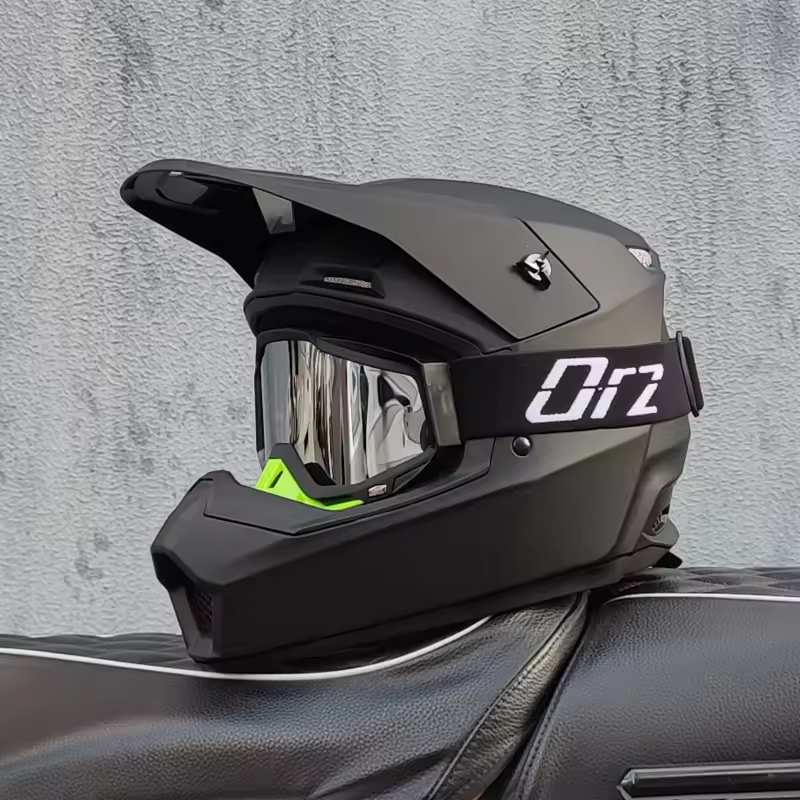
Customizable Fit Solutions
Removable and washable liners, along with adjustable cheek pads and retention straps, ensure a personalized fit. 3D-scanned molds now cater to diverse facial shapes, eliminating pressure points. Modular designs let riders swap liners for seasonal use.
Ergonomic Chin Strap Designs
Quick-release buckles and ergonomic strap placements distribute pressure evenly, reducing neck strain. Some helmets feature magnetic clasps or auto-lock mechanisms for effortless on/off access while maintaining safety standards.
Aesthetic and Functional Integration
Beyond safety, helmets now incorporate sleek, aerodynamic profiles for style and reduced drag. Matte finishes resist scratches, while modular visors allow riders to switch between clear, tinted, or fog-resistant lenses with a single click.
These innovations transform the full face motorcycle helmet into a blend of performance and comfort. By prioritizing breathability, reduced noise, and personalized fit, riders can enjoy safer, more enjoyable journeys—even on extended trips.
Choosing the Right Full Face Helmet: A Step-by-Step Guide
Selecting the perfect full face motorcycle helmet involves careful evaluation of your needs and preferences. Follow these steps to ensure a safe, comfortable choice:
1: Measure Your Head Accurately
Use a flexible tape measure to wrap around the widest part of your head (just above the ears). Compare the circumference to the manufacturer’s motorcycle helmet size guide to determine your size. Avoid guesswork—misfit helmets compromise safety and comfort.
2: Prioritize Safety Certifications
Verify certifications like DOT (mandatory in the U.S.), SNELL (for racing-grade protection), or ECE 22.05 (Europe). These standards ensure the helmet meets impact and penetration resistance benchmarks. Always opt for helmets with clear certification labels.
3: Match Design to Riding Style
- Road Riders: Choose streamlined helmets with noise-reducing foam and efficient ventilation for highway comfort.
- Adventure/Off-Road: Select reinforced chin bars and modular visors to handle debris and varying weather.
- Urban Commuters: Lightweight, breathable options with ergonomic straps are ideal for daily use.
4: Test the Fit
Try on the helmet and:
- Ensure it sits level on your head without tilting backward.
- Check that the chin strap forms a “V” under the ears when tightened.
- Confirm no gaps between the liner and skull—air pockets reduce impact protection.
5: Consider Comfort Features
Evaluate ventilation systems, moisture-wicking liners, and adjustable cheek pads. Test the visor’s clarity and ease of operation. For long rides, prioritize helmets with anti-fog coatings.
6: Budget Wisely
While premium brands like Arai or Shoei offer advanced features, mid-range options like HJC or AGV provide solid safety at lower costs. Avoid ultra-cheap models that may skip critical safety standards.
By following these steps, you’ll select a full face motorcycle helmet that balances safety, comfort, and performance. Remember: A well-fitted helmet is the first line of defense against riding risks.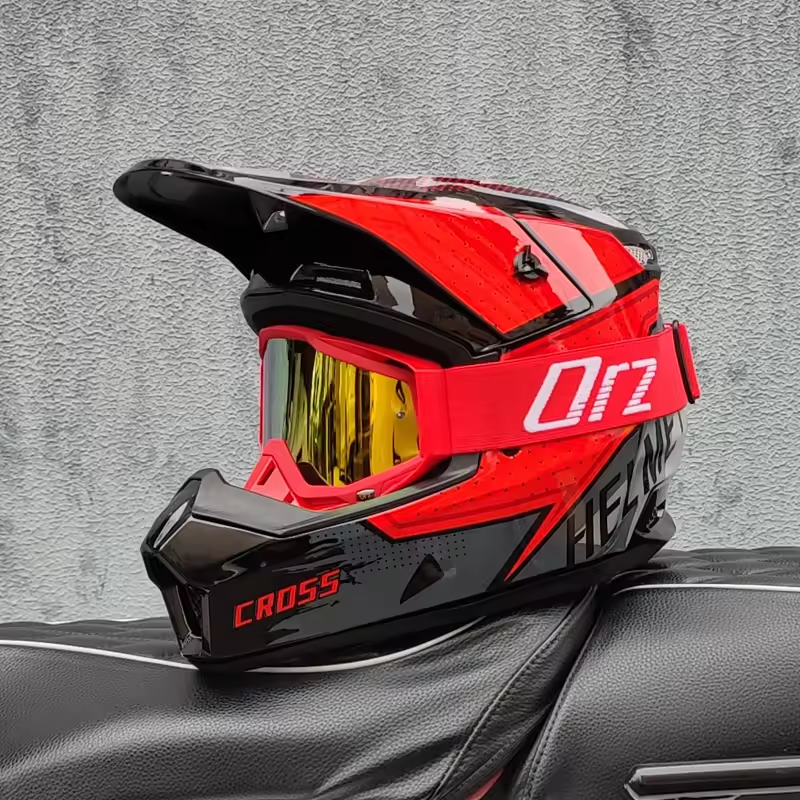
Certification Standards Explained (DOT, SNELL, ECE)
Motorcycle helmet certifications ensure safety through rigorous testing. Here’s a breakdown of the key standards:
- DOT (U.S. Department of Transportation)
- Mandatory in the U.S., verifies helmets withstand 23-mph impact tests, penetration resistance, and chin strap strength.
- Requires a DOT sticker inside the helmet. While basic, it sets essential safety thresholds for road riders.
- SNELL Memorial Foundation
- A voluntary, racing-grade certification with stricter criteria:
- Tests at higher speeds.
- Ensures helmets survive multiple impacts.
- Requires recertification every 5 years due to material degradation.
- Ideal for serious riders prioritizing top-tier protection.
- A voluntary, racing-grade certification with stricter criteria:
- ECE 22.05 (European Standard)
- Mandated in EU countries, tests impact resistance at 25 kph (~15.5 mph) and adds visibility requirements.
- Uses a hemispherical anvil to simulate real-world collision angles.
- Helmets bear an ECE label with the approving country code.
Key Differences:
- DOT is minimal compliance; SNELL offers premium safety; ECE balances EU-specific needs with durability.
- Always choose a helmet meeting at least one certification. For casual riders, DOT/ECE suffice; enthusiasts may prefer SNELL for extreme scenarios.
These standards ensure your full face motorcycle helmet withstands crashes—prioritize them when making a purchase.
Matching Your Riding Style: Road vs. Adventure Helmets
Choosing between a road helmet and an adventure helmet depends on your riding environment and priorities:
Road Helmets: Speed and Aerodynamics
Designed for highway and sport riding, these prioritize aerodynamics and weight reduction. Key features include:
- Streamlined shells to minimize drag at high speeds.
- Optimized ventilation with front/rear channels to keep riders cool.
- Noise-reducing liners for quieter rides.
Ideal for commuters and sport bikers, they offer sharp vision through fixed, clear visors but lack protection for off-road debris.
Adventure Helmets: Versatility and Protection
Built for rugged trails and unpredictable conditions, they focus on durability and all-weather adaptability:
- Reinforced chin bars to resist rocks and branches.
- Modular face shields that flip up for stop-and-go terrain or city rides.
- Wide visors with pinlock inserts for fog-free visibility in rain/snow.
Some models include removable earpads for cold weather or integrated Bluetooth compatibility.
Which to Choose?
- Road helmets: Perfect for high-speed, paved rides where aerodynamics matter.
- Adventure helmets: Essential for off-road trails, long tours, or mixed riding styles.
- Hybrid Options: Some brands now offer adventure-road helmets blending aerodynamics with modular designs for versatility.
Your riding terrain and comfort needs should guide the choice—balancing protection, adaptability, and performance.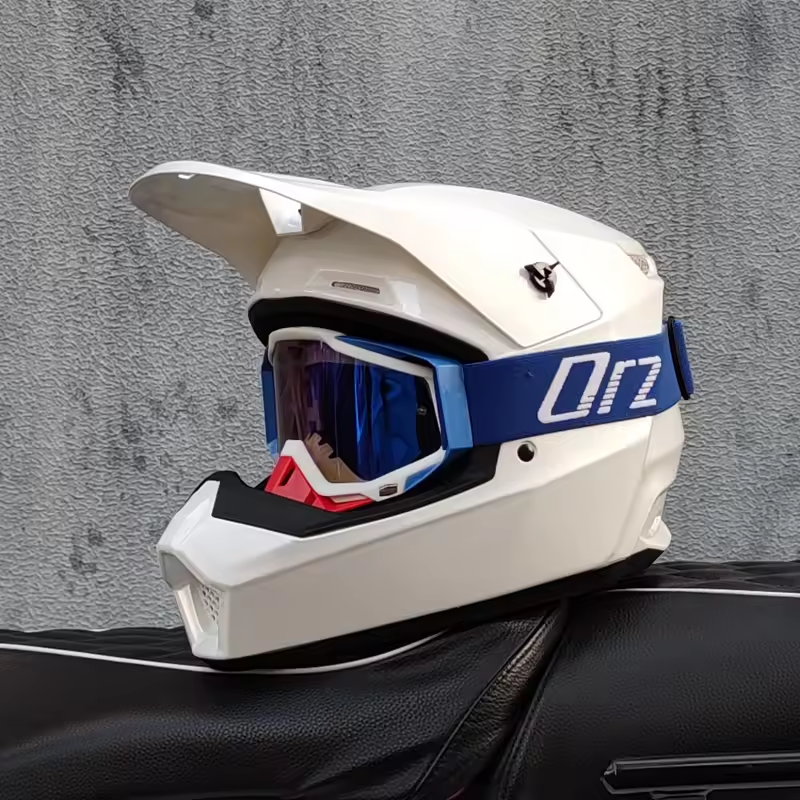
Maintenance Tips for Longevity and Performance
Proper care extends the lifespan of your full face motorcycle helmet, ensuring peak safety and comfort. Follow these maintenance practices:
1. Clean Regularly
- Use mild soap and lukewarm water to wipe the exterior. Avoid harsh chemicals that degrade EPS foam or polycarbonate visors.
- Remove liners and hand-wash them with gentle detergent; air-dry completely to prevent mold.
2. Inspect for Damage
- Check the shell for cracks, dents, or fading. Replace the helmet if the EPS foam is crushed or discolored from impacts.
- Examine the visor for scratches or fogging; replace it if visibility is impaired.
3. Store Properly
- Keep the helmet in a cool, dry place away from direct sunlight or extreme heat, which can weaken materials.
- Avoid stacking heavy objects on top, as this may deform the shell.
4. Replace Promptly
- Even without visible damage, replace helmets every 3–5 years due to foam degradation and material aging.
- Discard immediately after a crash involving impact, as structural integrity may be compromised.
5. Preserve Fit and Function
- Regularly adjust chin straps and cheek pads to maintain a snug fit.
- Test buckles and hinges for smooth operation to ensure they stay secure during rides.
By following these steps, you’ll preserve your helmet’s safety features and functionality. Remember: Regular maintenance isn’t just about cleanliness—it’s about protecting your most vital piece of riding gear.
Conclusion: Prioritizing Safety Without Compromising Style
The full face motorcycle helmet exemplifies the harmony between safety and style, proving that protective gear need not sacrifice aesthetics. Modern designs blend advanced safety features with bold colors, minimalist lines, and customizable accents, making them a statement piece for riders.
While safety remains the top priority—ensured through certifications like DOT and SNELL, robust materials, and ergonomic fit—the evolution of helmet design now lets riders express individuality. From matte finishes for a low-key look to metallic accents for a daring edge, there’s a helmet to match every rider’s persona.
Smart choices matter: A well-fitted, certified best motorcycle helmet safeguards against impacts while its sleek profile elevates any outfit. Brands like Shoei and AGV lead the way, offering helmets that merge race-ready protection with runway-inspired visuals.
Remember, style is meaningless without safety. Invest in a helmet that meets your riding demands, fits flawlessly, and reflects your personality. Whether you’re conquering mountain trails or cruising city streets, prioritize a helmet that stands out as much as it protects.
More Details